The National Endowment for the Arts (NEA) will distribute $75 million in funding provided by the Coronavirus Aid, Relief, and Economic Security (CARES) Act. The NEA “will award funds to nonprofit arts organizations across the country to help these entities survive the forced closure of their operations in response to the spread of COVID-19,” reads the press release.
In February 2020, the Native Arts and Cultures Foundation (NACF) co-hosted a first-of-its-kind gathering in Washington, D.C., with the National Endowment for the Arts (NEA) and the National Endowment for the Humanities (NEH). A report, produced by NACF, documenting the gathering and its main recommendations to strengthen the Native arts, cultures, and humanities field.
The Native Arts and Cultures Foundation (NACF), National Endowment for the Arts (NEA) and the National Endowment for the Humanities (NEH) co-hosted in Feb 2020 a convening with 13 Indigenous leaders from across the US to rethink funding methods and practices. What were the final takeaways? Join our webinar on March 30 to hear more! https://bit.ly/3bAtboe
Lee Kun-hee, the head of the Samsung conglomerate who passed away in October of last year, amassed an impressive collection of art estimated to be worth around ₩2 trillion (£1.26 billion). Now, South Korean art critics and cultural ministers are asking that tax laws be changed so that Lee’s heirs might opt to keep the collection all together and ultimately, all in the country.

Upon Lee’s passing, he was the wealthiest person in South Korea. However, that meant that his heirs were hit with record inheritance taxes totaling ₩11 trillion (£6.96 billion). According to current South Korean tax laws, artworks cannot be used to pay such taxes. So, in recent month, Lee’s heirs have had the collection appraised by three arts groups in preparations of sell it to help alleviate the inheritance taxes that are required to be paid by April.
Arts organisations, art critics, and former cultural ministers, alike, are concerned that if the collection were to head to the auction block, much of it would be sold to international buyers because many of the artworks in the collection are simply too expensive for South Korean buyers or institutions. This has led to a group of 12 arts organisations, including the Korea Fine Arts Association and the Korean Museum Association, alongside eight former cultural ministers calling on the government to amend existing laws to keep the collection in South Korea.
According to the Korea Herald, a Democratic Party of Korea representative has introduced a bill that would allow the donation of art to pay inheritance taxes in kind. If these measures pass, they could keep major artworks, that too expensive for museums to purchase, in the country.
The cost to acquire the Lee collection would be enormous, even if shared among all of the museums in South Korea. In fact, using 2019 budget information, president of the Art Market Research Institute So Jin-su found that it would take 132 years for the country’s museums to collectively purchase the Lee collection.
The Lee collection includes around 12,000 artworks that range from ancient Korean artworks, to works by Renoir, Chagall, and Giacometti, to works by Rothko, Damien Hirst, and Gerhard Richter. If the state were able to acquire the collection, it would be “a rare chance to establish a landmark museum” Choe Byong-suh, professor at Sungkyunkwan University, told Reuters.
The full extent of the Lee collection is unknown. However, one anonymous critic who was asked to value it earlier this year said: “The reason many go to the Louvre is to see the Mona Lisa, and the Sistine Chapel, the Creation of Adam. There are valuable masterpieces that can compare to that in the Lee collection.”
International Deadline: April 9, 2021 – Black Box Gallery is excited to announce a juried group photography exhibition on contemporary portraiture. 54 selections, multiple venues, awards, catalog, flat file…
The presence of NFTs in the art world took a large uptick recently. While having existed since 2017, non-fungible tokens—unique digital files which are verified through a blockchain not dissimilar to cryptocurrencies—have been causing a buzz over the past month with high-profile artists such as Grimes making millions off of NFT sales. While there is much debate on whether this booming trend is a move of progress in the art world for cutting out the middleman, or just a new face on the same closed circle, there is at least one group that is using the avenue of NFTs to maximum notoriety: Burnt Banksy.
Self-proclaimed “art and NFT enthusiasts”, Burnt Banksy made headlines this past week for an act that isn’t hard to guess. As the group geared up for the auctioning of an NFT representing Banksy’s 2006 work I can’t believe you morons actually buy this shit, they filmed one of their members setting flame to the original copy of the work and posted it to YouTube on March 3rd. The six-minute video features one of the group’s members, clad in a face mask and sweater featuring Banksy’s Girl With Balloon, taking a lighter to every side of the print to slowly burn it.
“We see this event encapsulating the first-ever major transition of a physical art piece into a digital one,” the group states on their video. “We view this burning event as an expression of art itself. We are generating a new form of artwork via the creation of this unique NFT that is a direct representation of the physical.”
But a large portion of the art world sees through the action as a stunt—a bombastic way to drive up the price of a hot-selling format with little-to-no artistic merit. Notoriety and money seem to be the primary aims of the event, and in that sense, Burnt Banksy succeeded, with the NFT of Morons going for $380,000 in auction and the action being talked about across arts publications.
Burnt Banksy, in partnership with SuperFarm (an NFT selling platform) and Injective Protocol (a medium for trading across blockchains), are apparently planning on similar stunts in collaboration with other artists.
Despite the clamour the event has caused, there is, in truth, little difference between the drives of Burnt Banksy and countless other collectors and sellers who are merely out for the money. In this way, it seems like the boom of NFT has simply transferred the norms of the industry to a digital forum. While some may speculate a meaning derived from the original intent of Morons and the context of the burning with the NFT auction, it is hard to see this as much more than a means to make a hot commodity that much hotter.
In this week’s Art World Roundup: At long last, works by women have been permanently hung in the Rijksmuseum Gallery of Honour, the original tweet by Twitter founder Jack Dorsey has hit the market as a NFT collectible, and the estate of late artist Robert Indiana reaches a settlement with the Morgan Art Foundation. Meanwhile, George Clooney signs letter calling for the UK to return Elgin Marbles and Without Walls announces their 2021 programme of works to be enjoyed as the UK (hopefully) leaves lockdown.
The Rijksmuseum is “catching up” on women’s history
At long last, the Rijksmuseum has hung artwork by women its prestigious Gallery of Honour. Coinciding with International Women’s Day, The Serenade (1629) by Judith Leyster (c. 1600-1660), Still Life with Flowers in a Glass Vase (c.1690-c.1720) by Rachel Ruysch (1664-1750), and Memorial Portrait of Moses ter Borch (1667/1669) by Gesina ter Borch (1633-1690) were hung in the gallery. Featured alongside some of the most well-known Dutch masterpieces, the inclusion of the three works let visitors in on a well-known secret: women have always been part of the history of art. The museum houses a collection of around one million artworks and it is unknown how many of those are actually by women. So, the Rijksmuseum initiated a research programme, headed by Jenny Reynaerts, curator of 19th-century paintings at the museum, to better understand the contribution women have made to the museum’s collection and Dutch cultural history. So far, more than 29,000 artworks by nearly 3,000 women have been identified by Reynaerts. Furthering their investigation, the Rijksmuseum is working with students from the University of Amsterdam on a project called “The Wife Of,” which is identifying and filling out information regarding the women represented with their husbands in the museum’s portrait collection. According to Reynaerts, the museum is also working to create a better picture of the women who have played a role in the Rijksmuseum’s history, including female donors, collectors, and curators, often referred to as assistants in the past. “The museum is catching up in the field of women’s history,” Reynaert said in a press release. In an interview, she pledged that “from now on the museum will always have female painters in the gallery.”
Jack Dorsey has entered the chat
NFTs (non-fungible token) have certainly taken the art world by storm as the newest form of collectible. In the digital age, it’s really no surprise, and Twitter founder Jack Dorsey is getting in on the action. Dorsey has put an NFT version of his original Twitter post up for auction. The March 21, 2006 post simply reads “just setting up my twttr” referencing the original spelling of the social media website. Almost 15 years old to the date, the OG tweet has received more than 150,000 likes and its NFT is currently sitting with a $2.5 million bid. Sina Estavi, CEO of blockchain trading platform Cryptoland and the Bridge Oracle cryptocurrency, holds that bid and has led bidding all week. NFTs have been a hot commodity as last month, Grimes sold NFT artworks for a total of $5.8 million and an NFT version of the Nyan Cat GIF sold for more than $561,000. A work by Banksy was recently set ablaze by a group of financial traders who made the performance into an NFT. The extent of NFTs has yet to be seen, but for the moment, they’re on a roll.
just setting up my twttr
— jack (@jack) March 21, 2006
Update: new development in the legal battle over Robert Indiana’s legacy
Late artist Robert Indiana is best known for his LOVE and HOPE sculptures that can be found in major cities spreading a little cheer in bold block lettering. Now there is a little hope for peace concerning the artist’s legacy and estate. Indiana’s estate has reached an out-of-court settlement with the Morgan Art Foundation, which has represented and held the copyrights to the artist’s works for many years, to settle years of back and forth. While details have not been released, a New York district court filed a notice stating that the compromise “should fully resolve all claims.” The saga of Indiana’s legacy is not yet over, but this is certainly a major step towards resolution. For instance, publisher Michael McKenzie and Jamie Thomas, who was Indiana’s long-term caregiver, were not involved in last week’s settlement. Just a day before Indiana died in 2018, the Morgan Art Foundation filed a lawsuit against McKenzie and Thomas claiming that they were isolating the artist and illegally producing artworks in Indiana’s name. A hearing between the Indiana estate and McKenzie is set to take place later this month. So, this is merely on hurdle in getting to the bottom of how Indiana’s artworks will be handled.

Not just another Monuments Man
Actor George Clooney is well known for many accomplishments and you probably remember the 2014 movie he starred in and directed, Monuments Men. In real life, though, Clooney has taken a staunch stance on repatriation and called on the UK to return cultural works to their original countries. Of particular interest to the actor has been the Marbles of the Parthenon, held at the British Museum. The marble works are often referred to as the Elgin Marbles after Thomas Bruce, the seventh Earl of Elgin, who sold the marbles to Britain in the early 1800s. Clooney joined a group of scholars, professionals, and cultural figures in signing a letter addressed to Janet Suzman, chair of the British Committee for the Reunification of the Parthenon Sculptures, demanding that the Elgin Marbles be returned to Greece. “There are indeed many objects of historical value that must be returned to their original owners,” Clooney expressed to Suzman. “However, none of them is as important as the Marbles of the Parthenon. […] The Parthenon Sculptures must be returned to their original owner.” For more than four decades, similar pleas have been made, but these calls have never been successful. In 2019, British Museum director Hartwig Fischer made controversial statements saying the works would never be returned and Britain has historically claimed the marbles were unable to be returned because Greece didn’t have the infrastructure to properly care for the historic works. The latter is no longer the case as in 2009, Greece unveiled a stunning new museum created with one purpose: to house the Marbles of the Parthenon. The Acropolis Museum sits within eyeshot of the Parthenon and was designed by Swiss-American architect Bernard Tschumi. The museum currently presents plaster casts of the marbles held in London alongside the sculptures Elgin left behind. In a 2009 interview, archaeologist Naya Charmalia, said that the stark contrast between the bright white plaster casts and the original stone was intentional. “Everyone understands at once what is missing,” she said, “because if you say numbers, you can’t understand, but you can see how many are missing.”

UK outdoor arts programme announces 2021 season
Without Walls has been bringing outdoor arts to the people of the UK since 2007, but the pandemic has set an unusual stage for the consortium of festivals and arts organisations. As the works brought together through Without Walls are outdoor, they are actually quite accommodating for COVID precautions, including social distancing measures. So, their upcoming season of 21 projects are likely to be a salve after more than a year of abnormal life. “This new outdoor art programme from Without Walls will bring audiences together in a safe way to share moments of global empathy and joy,” says Without Walls. “From the epic and spectacular, to the intimate and emotional, the Without Walls 2021 commissions offer a timely moment to explore social justice, family relationships, environmentalism, identity, and much more.” These are the projects included in Without Walls’ 2021 programme:
- Arrivals + Departures, Yara + Davina, London
- Black Victorians, Jeanefer Jean-Charles, London
- Bonded, Alleyne Dance, London
- Do what yah Mama told yah!, Just More Productions, London
- Future Cargo, Requardt & Rosenberg, London
- Good Youtes Walk, Far From the Norm, London
- IRMÃ-sisters, Damae Dance, Manchester
- Mayfly, Kapow Dance Circus Theatre, Manchester
- MEarth Mothers, Beady Eye, Canterbury
- Recovery Poems, Emergency Exit Arts and Robert Montgomery, London (Greenwich)
- Robo Selfie, Seth Honor / Kaleider, Exeter
- Roll Play, Simple Cypher, London
- Strong Enough, Strong Lady Productions – Charmaine Childs, Essex
- The Hidden Music of Trees, Jason Singh, Devon
- The Invisible Man, Altered States, Manchester
- The Lost Opera, Ashley Peevor, Bristol
- The Rascally Diner, LAStheatre, London
- TOAST, Pif Paf, Sheffield
- Up My Street, The Cultural Assembly, Essex
- What happened to you?, Nikki Charlesworth, Nottingham
- Why?, Gravity & Levity, Brighton
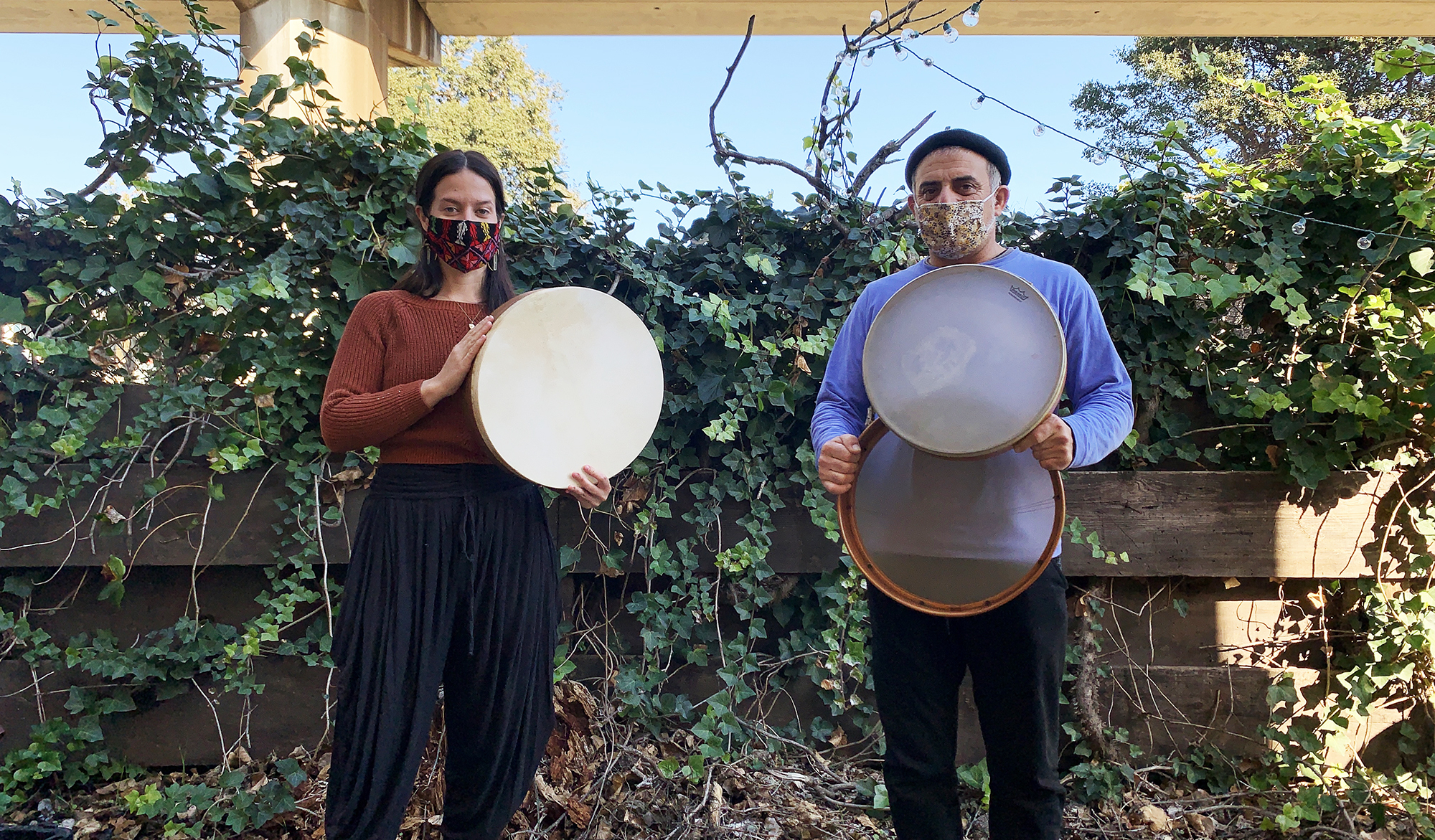
In a recent piece, Adam Fong, Program Officer in Performing Arts at the William and Flora Hewlett Foundation, reflects on a cluster of “adaptation grants” Hewlett put in place to help ensure Bay Area arts organizations “have sufficient resources to adapt to challenges both arising from and exacerbated by the pandemic.”
Besides highlighting equity and capitalization in the context of the pandemic, the article invites funders to consider another pathway to think about recovery.
The pressures that artists and cultural organizations face at the beginning of 2021 are many and multifaceted. Our Performing Arts Program can’t solve social and economic disparities, but we must contend with them. More urgently, those disparities, and the ways they are deeply racialized in the Bay Area, frame our work, and show how the way we shape specific efforts like these adaptation grants is critical to a more equitable future for the performing arts.
Image via Hewlett website
The painter Nina Chanel Abney has been on a steady ascent since she first unveiled her visceral fusions of abstraction and figuration at the Kravets Wehby Gallery in New York City in 2008.
Since then, she quickly developed a distinctive method, improvising images using scores of stenciled shapes and symbols, and graffiti-like touches of spray paint. Her large-scale, colorful, abstracted figurative works have been likened to masters like Romare Bearden, Stuart Davis and Henri Matisse. Addressing subjects as diverse as race, politics, religion, sex and art history, Abney shies away from linear storytelling and creates disjointed narratives that almost look overloaded yet balanced in some order with a bold and dynamic style.
Abney has been quickly embraced by museums, collectors and curators alike in the past few years. Her ascent in the art market has been steady and well-earned, making the Chicago-born artist a leading figure in contemporary art. Her work is included in collections around the world, including the Brooklyn Museum, The Rubell Family Collection, Bronx Museum, and the Burger Collection in Hong Kong.
Her oeuvre spans paintings, public murals, 3D figures, interactive anNina Chanel Abney continues to reach new heights imation and even augmented reality pieces. Her work can be found in public spaces, on basketball courts, in major museums and in renowned private collections worldwide. Her latest exhibition was on view in December of last year at Jack Shainman Gallery, where Abney has had representation since 2016.
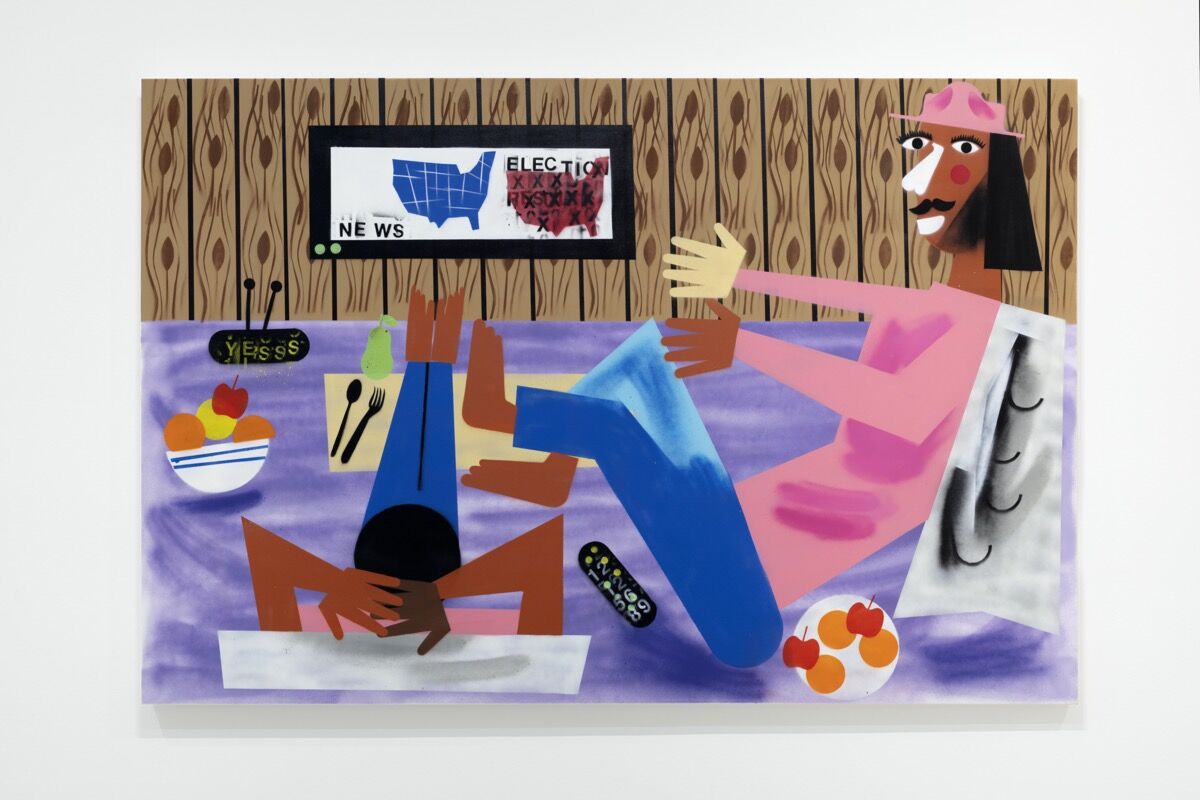
The exhibition at Jack Shainman Gallery was Abney’s second solo show with the gallery and focused on scenes of Black leisure and joy. A year after signing with the gallery, she received her first solo museum exhibition organized by the Nasher Museum of Art at North Carolina’s Duke University. The exhibition ultimatley traveled to museums in three more cities across the country and set the stage for Abney to enter the secondary market. In 2018, her 2012 canvas Country Ken appeared at a Christie’s sale with a high estimate of $7,000 but ended up selling for $47,500.
Following the tremendous success of her auction debut, works by Abney have continued to reach new heights. To date, Sotheby’s holds her auction record which was for Paradise Found (2009), a surreal canvas featuring bathers in a hot tub which held a £70,000 estimate but sold for over triple that amount (£225,000) in 2019.
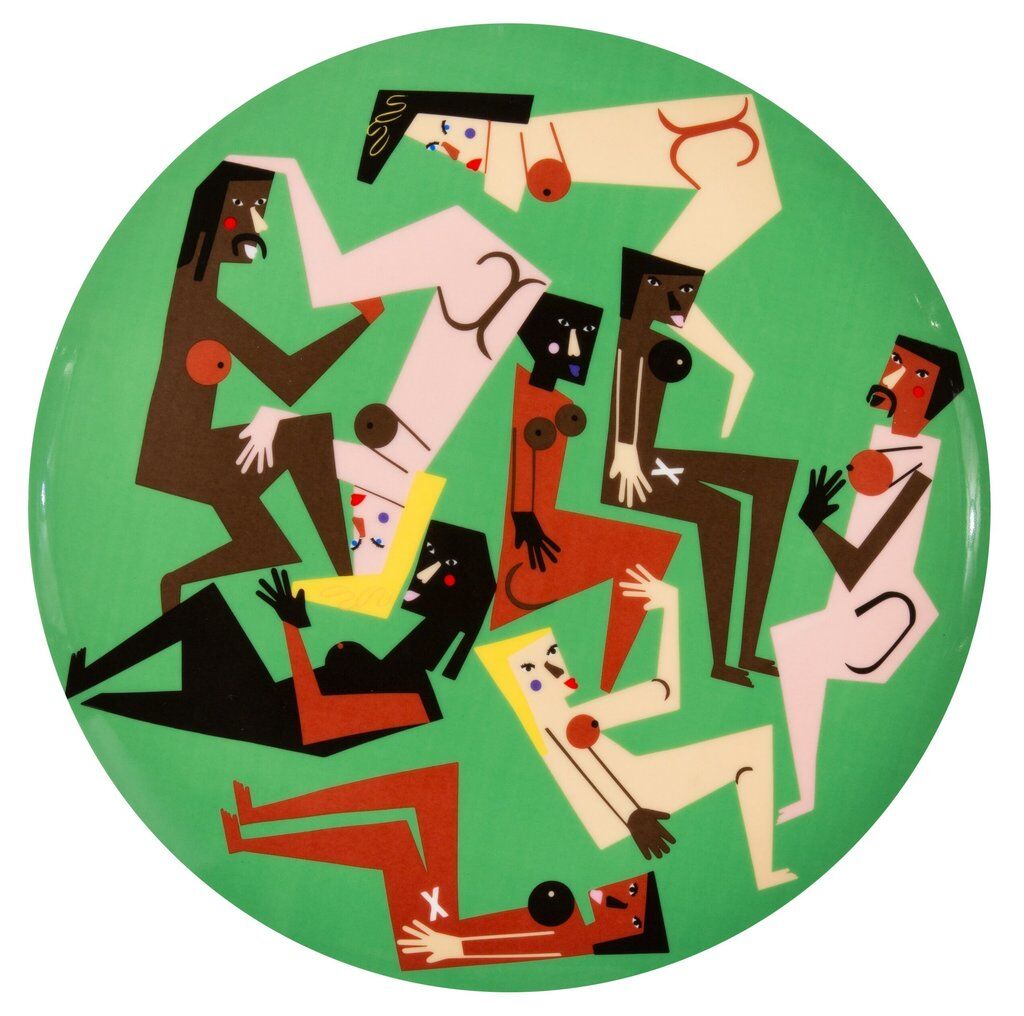
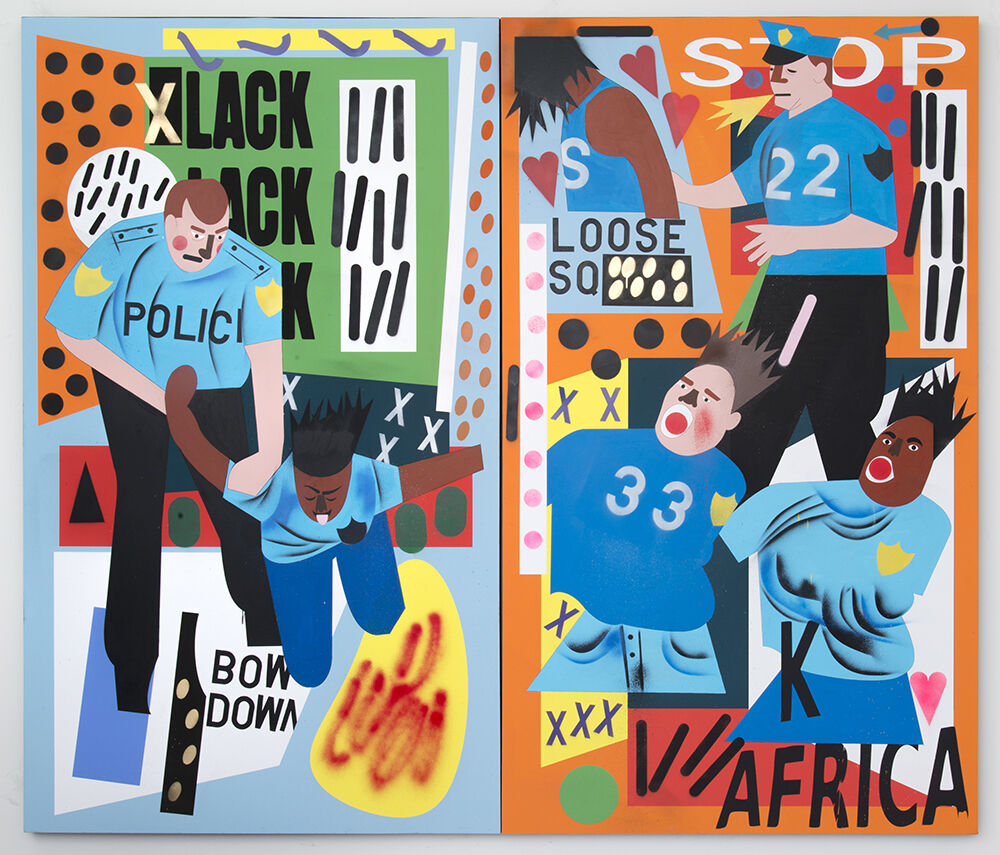
Abney has embraced her momentum and continued to produce thought-provoking work even during the pandemic. Last summer she launched her first-ever augmented reality work, Imaginary Friend (2020), with Acute Art, which tells the story of a sage-life figure who offers words of encouragement to those who need them. “Sometimes we believe nothing good can ever happen to us, so it don’t,” says the sage.
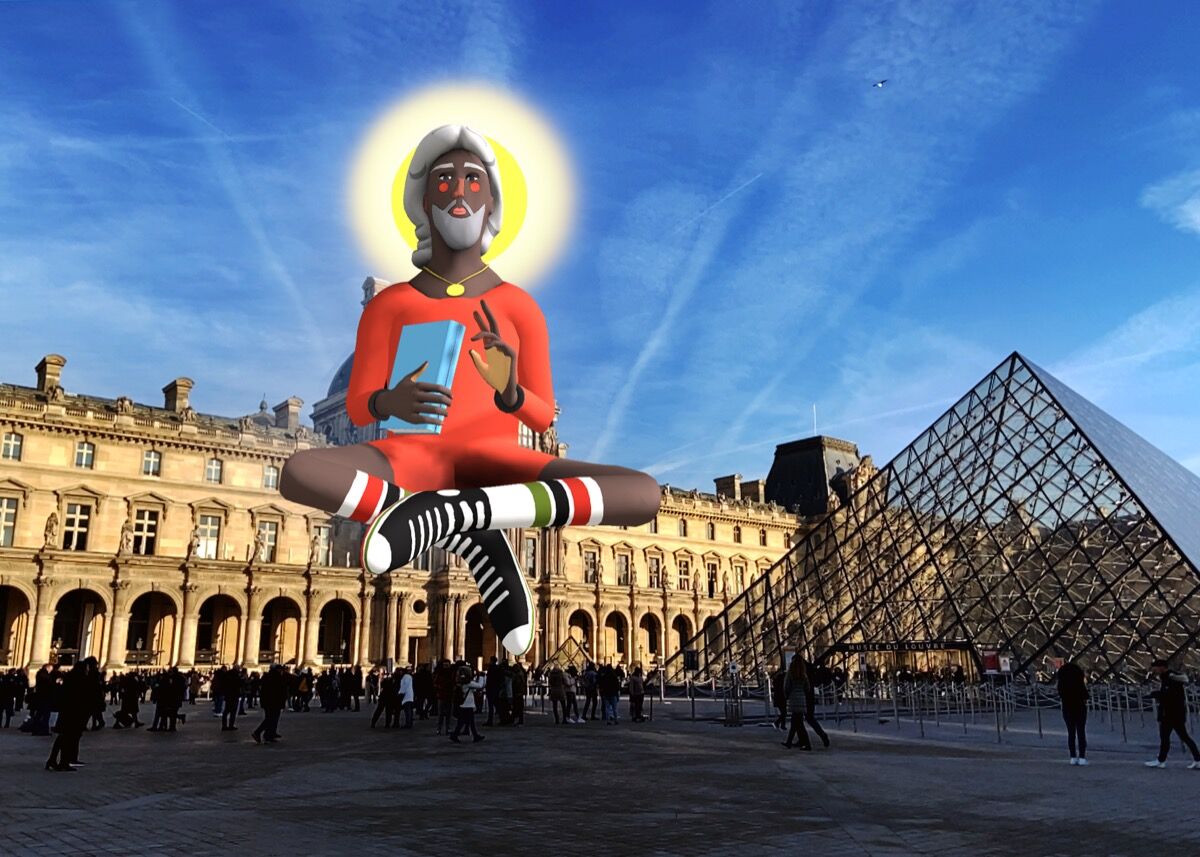
Her exploration of augmented reality in addition to her continued work as a muralist and brand collaborator, as well as her upcoming museum projects, are testaments to Abney’s commitment to making her art accessible to all and status as a major force in contemporary art today.
Photographer Eve Arnold once remarked “I would prefer photography to be a folk art – cheap and available to everybody, rather than elevated to mandarin proportions created through an artificial scarcity.” It was that quote, seen by Arnold’s grandson, Michael Arnold, who now manages her archive, that inspired a collection of prints released as posters that are selling for just £30.
Arnold is among the most recognizable names in 20th-century photography. Born in Philadelphia in 1913, Arnold didn’t become a photographer until she was in her 40s. She went on to become as well known for her photographs of Hollywood stars, like Marilyn Monroe, as her photojournalist coverage of the Civil Rights movement and documentation of life across the globe.
The only formal training Arnold received was a course with Alexei Brodovitch at the New School for Social Research. On assignment for that course, Arnold spent time photographing the fashion industry of Harlem in 1951, a largely ignored facet of the fashion industry. Those photographs were run the following year by Picture Post magazine, as no US publication would take them. That series of photographs became Arnold’s break. In 1962, she moved to London, where she would live until her death in 2012.
In the 1950s, she became the first woman to join the Magnum agency, whose co-founder, Robert Capa, described Arnold’s body of work as landing “between Marlene Dietrich’s legs and the bitter lives of migratory potato pickers.”
Now, a series of 15 photographs, a number of which have never been seen, are being released as posters by Arnold’s estate to keep her work alive and to introduce the late photographer to new generations. According to Michael Arnold, the release and its mission reminds him of stories Arnold told him of her first show in London where she sold prints of her work at a fraction of their worth so art students could afford them; however, Arnold later found out that art dealers had snapped up the discounted works only to turn around and resell them.
The poster release exemplifies the breadth of Arnold’s works. One image shows a Mongolian woman training a horse in a beautiful green pasture while another captures a loving and playful moment between a Cuban fisherman and his family. Civil Rights Activist Training shows a Black woman reading her book as she’s trained to ignore abuse and Baby’s First Five Minutes captures an intimate moment that speaks to Arnold’s self-described obsession with birth.
A series of unseen photos from the set of Misfits, the 1961 film, offer a different side to Marilyn Monroe, who was not only a fan of Arnold’s but also a friend. The photos show Monroe working, at times unaware that her photo is being taken. “There is something about the one where she’s in the car,” Michael Arnold told The Guardian. “It’s not the typical glamour shot you often see with Monroe, there’s an ordinariness about it … she is going about her craft, she’s learning her lines. There’s something about the composition which makes it special.”
“The themes she photographed are ever-present, if not more so – racism, sexism, inequality … not to mention the humanity she brought to her work,” continued Michael Arnold. It’s that humanity emanating from each and every photograph that ties Arnold’s body of work together in a stunning fashion. And now, you can bring Arnold’s work into your own home.
The poster collection can be found at evearnold.com/posters and are available from today 11th of March.
International Deadline: April 11, 2021 – The National Oil & Acrylic Painters’ Society invites oil and acrylic painters worldwide to enter our online exhibit honoring the Best in oil and acrylic painting. Cash wards…





